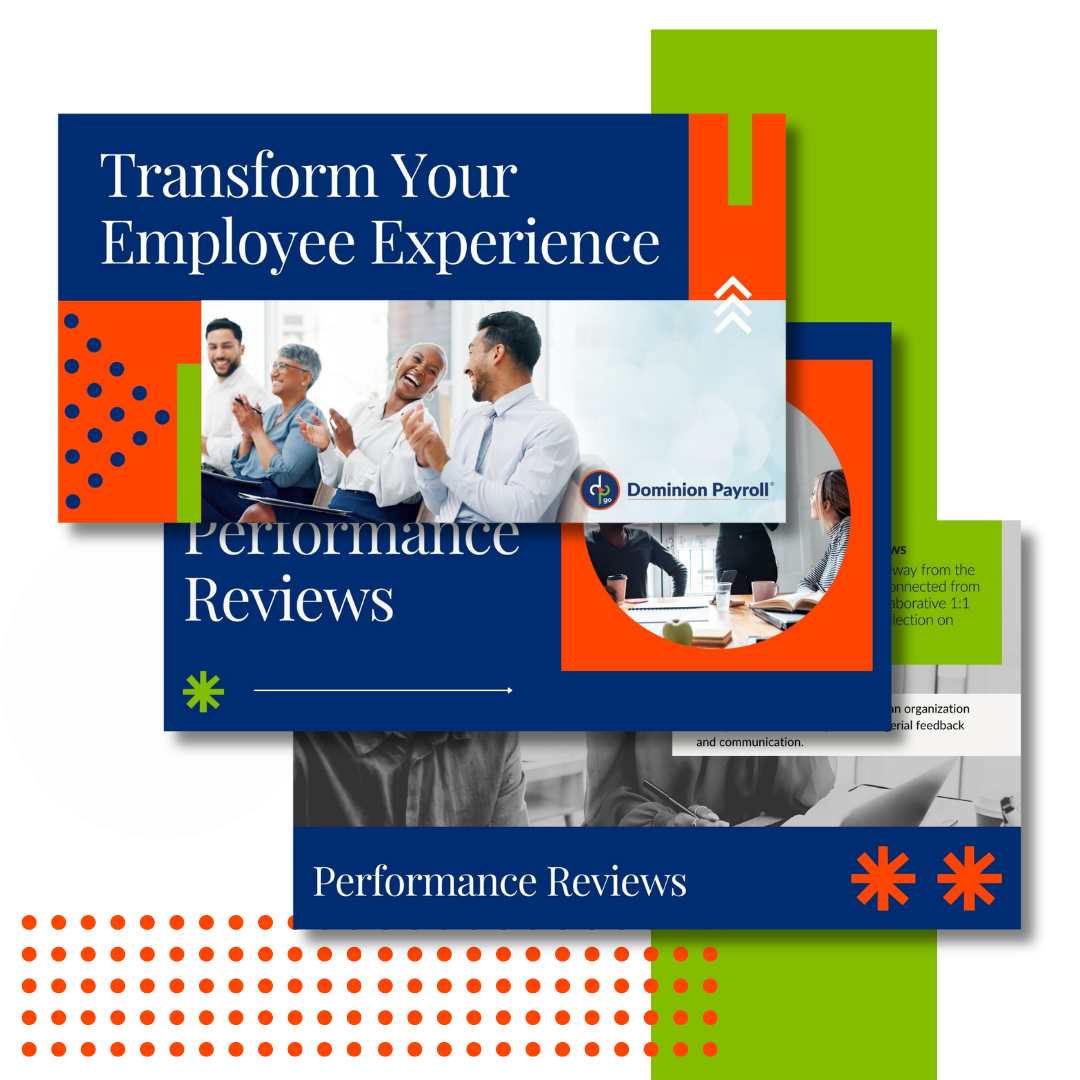7 min read
Mastering the Art of Feedback: A Guide to Effective Employee Performance Reviews
 Dr. Shayna Cooke
:
Jan 30, 2024 9:00:00 AM
Dr. Shayna Cooke
:
Jan 30, 2024 9:00:00 AM
In the dynamic landscape of today’s business world, mastering the art of feedback is not just an asset; it’s a necessity. Effective employee performance reviews are crucial for fostering growth, aligning goals, and enhancing productivity. However, the process is often fraught with challenges and apprehensions, both for managers and employees. People need and appreciate feedback, but the feedback must be comprehensive and meaningful. This post aims to unravel the intricacies of performance reviews, offering practical strategies for conducting them effectively with your teams.
The Importance of Effective Performance Reviews
Performance reviews are more than just administrative routines; they are a pivotal part of employee development. They are also incredibly important to the growth of the individual. The dynamic of the workplace is shifting as a new generation of workers enters the field. These workers are hungry for feedback and growth and are determined to find that commitment from their employers. The narrative around the annual review is changing away from the dreaded “annual conversation” that would often feel disconnected from actual performance to a more collaborative experience between manager and employee that allows for deep discussion and reflection on performance, goals, strengths, and growth.
73% of Gen Z employees are likely to leave an organization if they don’t receive frequent managerial feedback and communication – StaffCircle Survey
Performance reviews provide a structured opportunity to acknowledge accomplishments, address areas needing improvement, and align individual goals with the organization's broader objectives. When done correctly, these reviews can boost employee morale, enhance engagement, and drive organizational success.

Overcoming Common Challenges
Despite their importance, performance reviews often fall short of their potential. Common challenges include a lack of clear objectives, ineffective communication, and biases. To overcome these hurdles, it is crucial to approach reviews with a clear strategy, grounded in fairness and constructive feedback.
Let’s explore the key components of an effective performance review:
Setting the Stage for Success
1. Establish Clear Objectives
Before diving into performance reviews, it’s vital to establish what you want to achieve. Objectives may include goal setting, feedback, career development, or compensation adjustments. Clear objectives ensure that the review is focused and productive. Share these objectives with the employee prior to the conversation so they are aware of these going into the conversation and so they have adequate time to prioritize their own objectives as well.
2. Creating a Culture of Feedback
This review should be a two-way conversation allowing the employee the time and space to also provide feedback to the manager on ways to improve communication or support for continued growth and success. Work to cultivate a feedback-friendly environment in your teams that is ongoing and informal throughout the year. This approach not only reduces anxiety around formal reviews but also creates a culture of continuous improvement and open communication.
Conducting Effective Performance Reviews
1. Preparation is Key
The effectiveness of a performance review often hinges on preparation. Review past performance data, set goals, and be ready to provide specific examples. Preparation shows employees that you value the process and respect their time. The review should span successes and challenges from the entire year. Preparation includes taking detailed notes during the weekly 1:1s all year, keeping emails of support or struggle about this employee, notes from critical conversations, overall review of annual KPIs, etc to paint the whole employee picture for the year. At Dominion Payroll, our Talent Management platform, Share & Perform, allows managers to use the “Notes” feature in each employee account to record thoughts, conversations, ideas, and discussion topics in one place throughout the year to help them recall the entire year during preparation for the performance review conversation.
2. Structuring the Review
A well-structured review includes an analysis of past performance, a discussion of strengths and areas of opportunity, setting future goals, and addressing any concerns. This structure ensures that all critical areas are covered. At DP, we have broken the review process down to be equally communicative between the manager and the employee. The employee is asked to fill out their reflection section in Share and Perform prior to the annual meeting. The employee section covers questions pertaining to how supported they felt during the year, ways that they have worked outside of their existing job descriptions, ways that their manager could support them better in the coming year, and skills and professional development opportunities they would like to aim for. They then submit this reflection through Share & Perform before the review, which is then emailed to their manager, allowing their manager to see and digest the employee reflection before the conversation ensues.
3. Delivering Constructive Feedback
Feedback should be constructive, specific, and balanced. Avoid generalizations and focus on observable behaviors and results. Remember, the goal is to guide and motivate, not to criticize or demoralize. Kim Scott reminds us in her book, Radical Candor, to “care personally at the same time as you challenge directly”. Ultimately, managers are responsible for their team's results, so the management of teams must be straightforward and humanizing so that the result is a high-performing team. Holding people accountable to the work expectations is a necessary part of management and therefore a necessary part of the feedback cycle as well.
4. Active Listening
Active listening is a key component of effective reviews. Encourage employees to share their thoughts and concerns. Be mindful of how much talking you are doing and remember that this is meant to be a collaborative process, not one dictated solely by thoughts of the manager. If the manager is doing all the talking, this is broadcasting thoughts rather than engaging in meaningful conversation. This approach not only makes your employees feel valued but also provides insights that can guide future strategies.
5. Setting SMART Goals
When you begin setting intentions and goals for the year ahead, it’s important to make sure that the goals are clear and actionable. An acronym often used around goal setting is “SMART”: defining goals as Specific, Measurable, Achievable, Relevant, and Time-bound (SMART) is crucial for future performance. SMART goals provide clarity and direction, making it easier for employees to understand expectations and how their work contributes to the organization’s success.

Tips For Navigating Difficult Conversations
During the review process, there will inevitably be moments where you will have to address behaviors or characteristics with the employee that need to be addressed. Perhaps the employee needs to work on time management, productivity, hitting individual SLAs and performance metrics, showing up for work on time consistently, being more of a team player, taking more initiative, etc. While these conversations can be difficult, they are imperative to have with the employee and will ultimately lead to the growth and development of the employee when done well.
A rule that I share with my team is to always have these conversations “often and early”. If you shrug off these little annoyances in hopes that they will get better before you have to say anything, I can assure you that they will not. What will happen is that the little annoyances will grow over time until you become so frustrated by the behavior that you then overreact and jump straight to a Performance Improvement Plan which will come as a surprise to the employee because they were never clued in on the issue at hand. Be confident in your leadership enough to have these conversations with the people who report to you. You owe them the opportunity to learn how to be a successful professional under your guidance. Difficult conversations are only difficult because of the feelings that we have around them. We generally don’t want to hurt anyone’s feelings and the feeling that we get in the pit of our stomachs before we have to have these conversations can oftentimes be enough to convince us to just let it go. I can promise you that if you have these conversations early and often, you will get better at them, and they will become less painful. Your employees will be grateful for the consistent transparency and clarity that you provide for them.
Addressing Underperformance
Discussing underperformance is challenging but necessary. Focus on specific issues and their impact, rather than personal attributes. Offer support and resources to help the employee improve. Remember, this is not personal, it’s business. If the expectations and metrics of
success are clear for your employees, and they are not meeting those, a conversation needs to happen and can be based on fact. It is important to understand WHY the employee is underperforming. Do they need additional training? Are they unsure of how to perform pieces of their job confidently? I genuinely believe that when people get up in the morning, they do so with the intention to do their very best job throughout the day so if someone is not hitting those marks, getting to the heart of the issue will be helpful for you and the employee.
Handling Emotional Reactions
Emotional reactions are common during performance reviews. It’s important to remain calm and empathetic, validating the employee’s feelings while steering the conversation back to constructive pathways. Your job as the manager is never to lose your temper…ever. You must keep your composure and keep the conversation professional at all times. If the conversation turns emotional, it is best to stop the conversation at that moment, call the emotion out, and tell the employee that you will revisit this conversation after the emotions and tempers settle. No resolution will be found in a moment where emotions are taking over the conversation.
Encouraging Open Dialogue
Creating an environment where employees feel comfortable expressing their opinions and concerns is crucial. This open dialogue fosters mutual respect and understanding. The phrase that I use most often and find most useful in my practice is, “tell me more about that”. This simple phrase opens space for an employee to dive more deeply into their experience and share their thoughts, ideas, and concerns more fully and it also helps me get a better understanding of where they are coming from or how they are viewing a particular situation.
Post-Review Strategies
Follow-Up is Essential
A performance review shouldn’t be the end of the conversation. Regular follow-ups help keep goals on track and demonstrate an ongoing commitment to employee development. Use those weekly 1:1's to check in on the intentions and goals set during the annual performance review to make sure the employee is still on track to hit those success metrics that you both set at the beginning of the year.
Providing Ongoing Support
Offer continuous support and resources for employee development. This could include training programs, mentorship, or regular check-ins. If you are not looking out for the growth and development of your employees, no one is. Helping your teams grow and develop is one of the most important pieces of your work.
Measuring Progress
Establish metrics to measure progress towards goals. Regularly reviewing these metrics with employees can help maintain focus and motivation and allows you to know who is on track and who needs additional support.

Mastering the art of feedback through effective employee performance reviews is a vital skill in today’s business environment. By setting clear objectives, preparing thoroughly, delivering constructive feedback, and fostering an environment of open communication, managers can significantly enhance the value of these reviews. Remember, the ultimate goal is to develop a collaborative process promoting growth, aligning individual and organizational goals, and driving collective success.
Effective performance reviews are an ongoing journey that takes a significant amount of work and practice. They require commitment, empathy, and a willingness to adapt. By embracing these principles, managers can transform performance reviews from a dreaded obligation into a powerful tool for organizational and personal growth.

